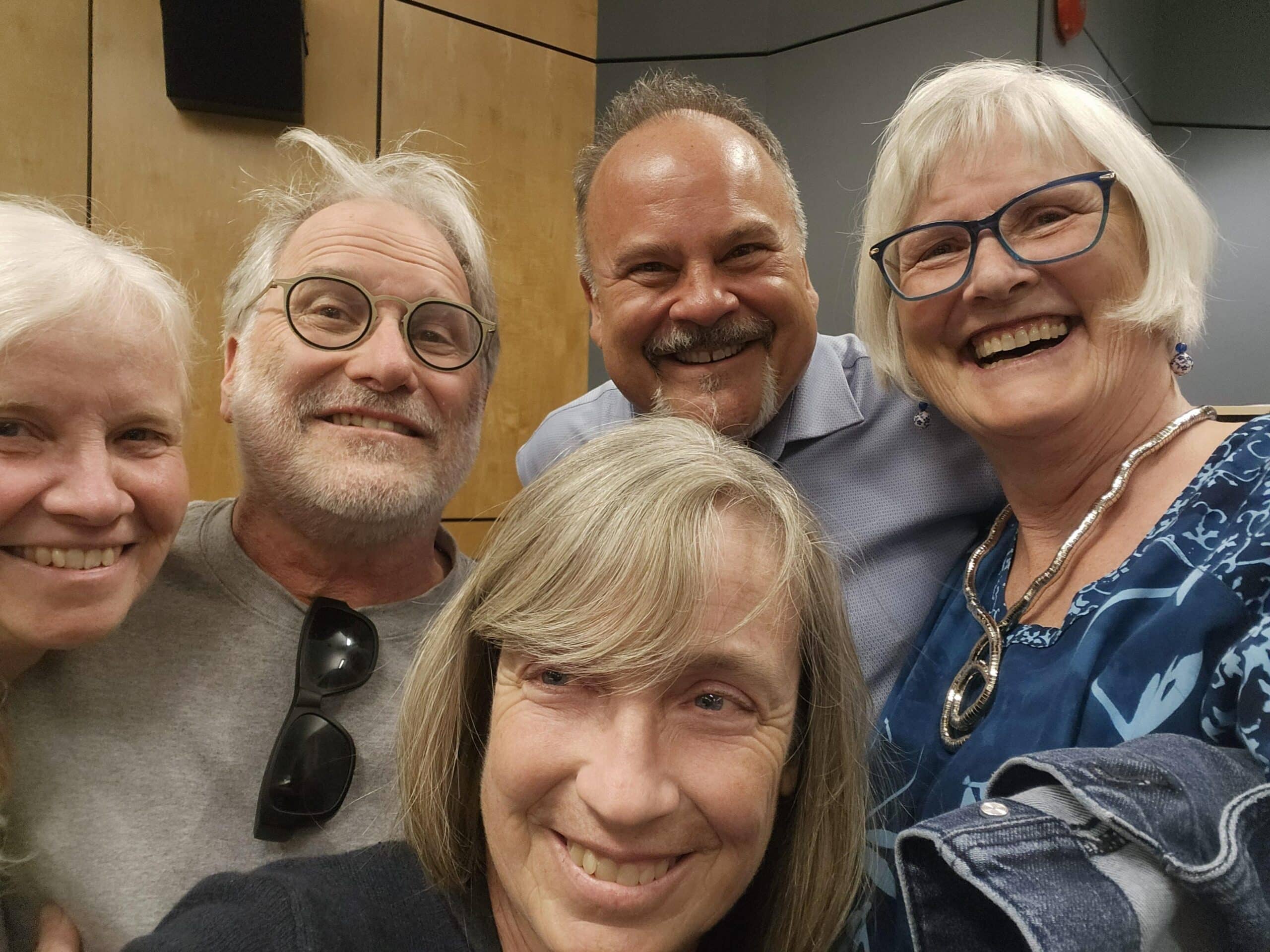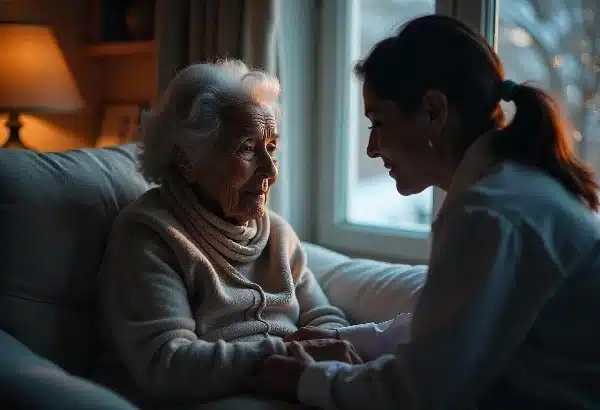It takes a village to raise a child, (and my mother added, “It takes a community to care for the dying”).
I often think of this quote and celebrate the people who helped me to raise my kids, and those who contribute to the development of hospice and palliative care education resources.
This past week I received some beautiful, inspiring, testimonials about our new nurse’s text, Essentials in Hospice and Palliative Care: A Practical Resource for Every Nurse. I want to share those testimonials, but do NOT want to share the testimonials until I acknowledge the people who contributed to the development and inspired or influenced or assisted with the writing of the text.
I understand that some people do not read the Acknowledgements section of a book, so I determined to publish these pages here on the website. In the coming days I will share the testimonials and you can thrill in the accomplishments of the larger group.

Acknowledgement
I am extremely grateful to the people who helped me in the development of this book.
I am grateful for the hospice and palliative care nurses who strengthened my practice and who influenced the education I provide. I thank Terry Downing, Coby Tschanz, Della Roberts, Deanna Hutchings, Terry Webber, Jeanne Weis, Dr. Ann Syme, Uta Rach, Krystal Anne Murray Brown, Chelsea Knowles, Maggie Moreton, Sarita Van Dyke, Brenda Hearson, Ann Brignell, and nurse practitioners Camara Van Brennan and Janice Robinson.
Thank you to the educators who have mentored me, provided insight, and shared their passion for nursing and nursing education, teaching, and learning. In particular, I thank Jeanne Weis, Coby Tschanz, Joanne Thomson, Dr. Lorelei Newton, Dawn Witherspoon, Andrea Leatherdale, Leanne McKinzey, Dr. Carrie Mines, Laura Bulmer, Zola Goebel, Esther Aguilar, Dr. Gweneth Doane, and Dr. Kathy Kortes-Miller.
I am grateful for the privilege of working with these hospice and palliative care physicians in the clinical setting, with the Palliative Response Team, through educational endeavours and in international projects: Drs. Pippa Hawley, Deb Braithwaite, Josh Shadd, Sharon Koivu, Doris Barwich, Jim Wilde, Michael Downing, and Fraser Black.
Working with counsellors and spiritual care providers helped me to better understand the psychosocial perspective. I am thankful for the time spent with Allyson Whiteman, Elizabeth Causton, Michelle (Misha) Butot, Michelle Dale, Wendy Wainwright, Susan Brieddal and Dr. Carla Cheatham.
I am grateful for the personal support workers, including Jackie McDonald, who represents the many health care workers, health care assistants, and nursing assistants I have met through the years who have taught me much and who provide phenomenal care for the dying and their families.
I am grateful for all those who assisted in this project through research and contributions, specifically the following people:
- Jeanne Weis, Terry Webber, Allyson Whiteman, and Terri Litfin for their help in searching the literature and identifying treasures of knowledge and best practice.
- Kelli Stadjuhar and the Initiative for a Palliative Approach in Nursing Leadership and Education (iPANEL) team for their phenomenal work on integrating a palliative approach into care.
- John Mastrojohn, Dr. Christy Torkildson, Pam Malloy, Dr. Ira Byock, Dr. Terry Martin, Dr. Cheryl Parrott, Lynn Tobin, Marlene Lee, and Sara Collins, who helped me to understand the perspective from the United States.
- Michelle Dale, who shared her guidelines for family conferences and the analogy of the marathon of caregiving.
- Lorelei Newton, Dr. Janet Storch, Barbara Mason, and Erika Paxman, who helped me to explore ethics in nursing and, in particular, ethics in dying and in caring for the dying person and family.
- Kelsey Rounds, who contributed knowledge and research about marginalized populations and their experiences with health care.
- Betty Davies and Dr. Rose Steele for their research on best practices health care professionals, which informed Chapter 3. Betty has been an example to me of excellence in nursing since the 1970s.
- Misha Butot, who helped write the “Personal Creed on Love in Professional Practice” and, with creative support from Coby Tschanz, Allyson Whiteman, and Joanne Thomson, worked with me to summarize the “Ten Principles of Love in Professional Practice” (based on Misha’s initial research).
- Darcy Harris and Dr. Phillip Larkin for their input on compassion.
- Elizabeth Causton, who wrote the metaphor of the “Family Dance” and provided content on therapeutic boundaries, roadblocks to communication, and responding to questions.
- Jim Mulcahy, who shared “A Story about Care,” which Virtual Hospice was wise enough to record and post as a YouTube video.
- Bruce Kennedy, an expert and dedicated hospice palliative care pharmacist and researcher, who provided valuable input to the section on using opioids in hospice and palliative
- Cari Hoffman who provided insight and guidance for the section on advance care planning.
- David K. Wright who collaborated on the excellent piece on physician-assisted dying.
- Andrea Warnick, a fellow student in the thanatology program at Hood College, who wrote the piece on working with children.
- Ann Syme for sharing her ideas and resources on sexuality and intimacy.
- Carla Cheatham for her research on spiritual care, and her contributions to the FICA Spiritual Care Assessment tool.
- Françoise Mathieu, who contributed to the piece on compassion fatigue in the books I wrote for personal sup- port workers and nursing assistants: Integrating a Palliative Approach: Essentials for Personal Support Workers (2014) and Essentials in Hospice and Palliative Care: A Resource for Nursing Assistants (2015). The materials in those texts were adapted for this text for nurses.
- Carrie Bergman from the Center for Contemplative Mind in Society provided insight and shared the illustration of the Tree of Contemplative Practices.
- Many organizations and people helped form the foundation of this text. I gratefully acknowledge:
- The two national education providers—Pallium Canada (Learning Essentials Approaches in Palliative Care [LEAP]) and, in the United States, the End-of-Life Nursing Education Consortium (ELNEC).
- Betty Ferrell and Dr. Nessa Coyle, editors of and contributors to The Oxford Textbook of Palliative Nursing. They are leaders in palliative care nursing in the United States and internationally.
- The two national, hospice and palliative care associations— the Canadian Hospice Palliative Care Association (CHPCA) and, in the United States, the National Hospice and Palliative Care Organization (NHPCO), and their respective leaders Sharon Baxter (executive director) and John Mastrojohn (chief operating officer).
- Victoria Hospice Society, which provided me with almost 25 years of work experience, on-the-job education, and the opportunity to teach and attend some seminal educational events.
- The College of Licensed Practical Nurses of Alberta, which gifted me with an in-kind donation of work time from Jeanne She provided her expertise as a strong hospice and palliative care nurse and a former licensed practical nurse. She has a Master of Nursing degree and brought with her to this project her experience in policy writing. This gift was a vote of confidence and support, and included the College’s express desire to have a resource that would help students in practical nursing programs achieve the competencies related to hospice and palliative care. Thank you, Linda Stanger, Teresa Bateman, and Glenda Tarnowski.
I need to acknowledge that my involvement with hospice and palliative care nursing started in my childhood. My dear aunt, Frances Montgomery, the master family caregiver, introduced me to caregiving and compassionate communities when I was a teenager, and my mother, Yetta Lees, not only taught me of community, but also asked and allowed me to be part of the community that cared for her when she died.
I have said often that I am very good at gathering together excellent people into a team. The team members that worked directly on this book are:
- Joanne Thomson—How did I ever attempt to provide education without an artist in my life? Creating educational resources with Joanne has thrilled me. Together we wrestled with concepts and explored ways to create “delicious and digestible” resources, and then Joanne would retreat to her studio and later return with illustrations that inspired and strengthened the written materials. Thank
- Greg Glover—Thank you for your outstanding work on the complex layout of this book, which helps make it visually delicious and educationally digestible. Your insight and experience have been invaluable to this
- Ann-Marie Gilbert—This book would not have been finished if it were not for you. You endured and even enjoyed the process right through to completion. I thank you, Ann-Marie, and appreciate your many, many
- Sarah Weber and Ann-Marie Gilbert—You are phenomenal editors. Thank you both. Your attention to detail is incredible. Wow! I stand all amazed!
- Kim Garnett—We at Life and Death Matters knew when we first met you that we needed you, your leadership, and your ideas. Thank you for coming on board and for staying on board!
As well I thank Ted, my hubby of over 35 years. Thank you for your help, your encouragement, and your constant belief in me. ¡Gracias, mi amigo!
And to our kids—Jenny, Naomi, Michael, Krystal, and Geordie—thank you for all the lively dinnertime conversations about dying, loss, and grief. Thank you for helping me to live more fully and to love more deeply.
Kath









2 Responses
Kath your commitment to all things “palliative” shines through in this new Nurses’ text. Your whole being radiates with your compassion in helping others. Your complete willingness to share all that you’ve learned over your lifetime is a testament to your ability to lead.
I have always appreciated all things about you…thank you.
Shelley
Thank you for this lovely reply to the blog post. I so appreciate your support. Warm regards to you as you also seek for continued growth and development as a HPC Nurse!